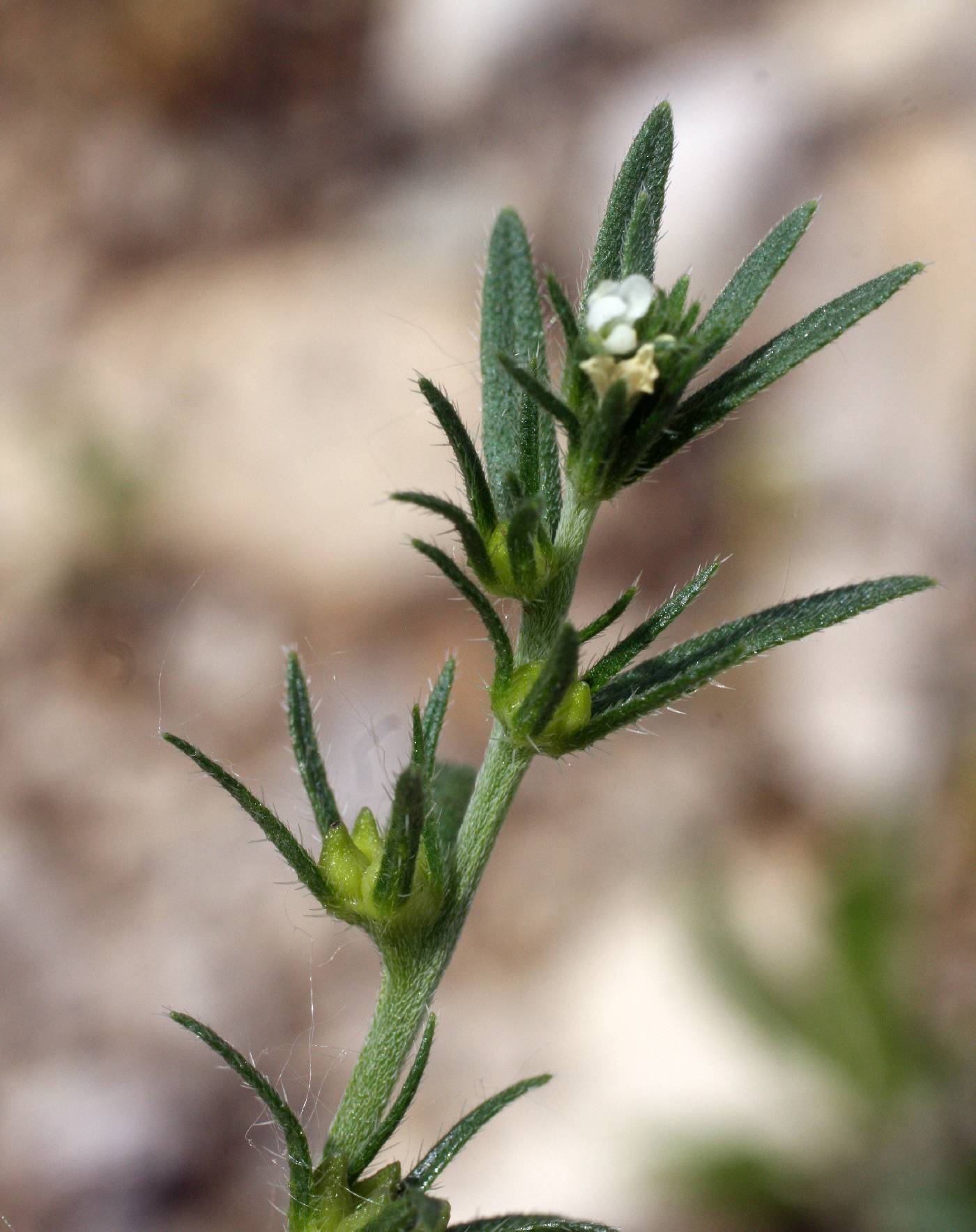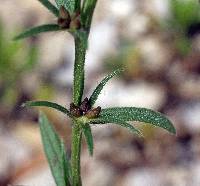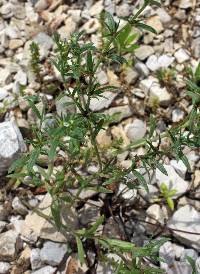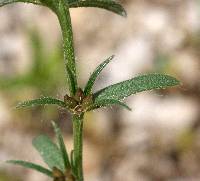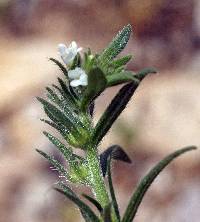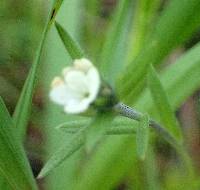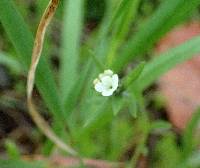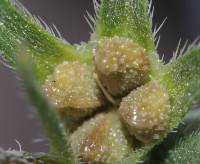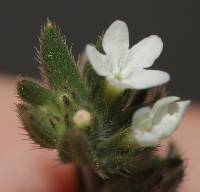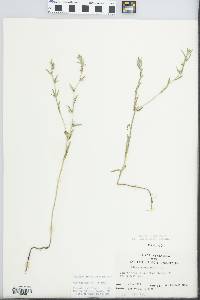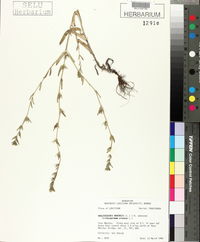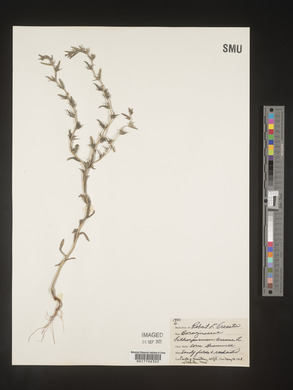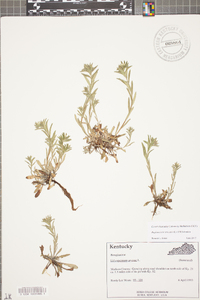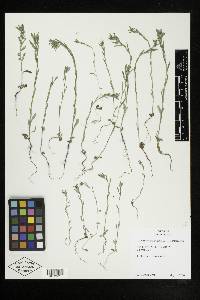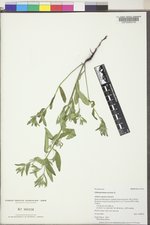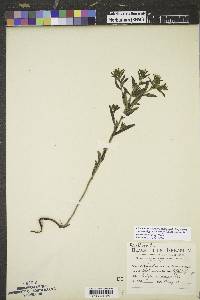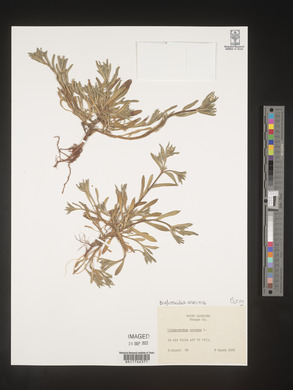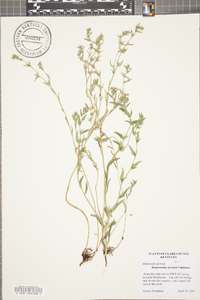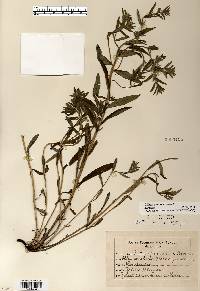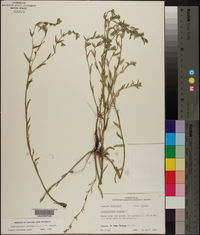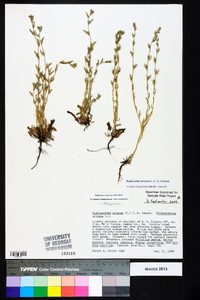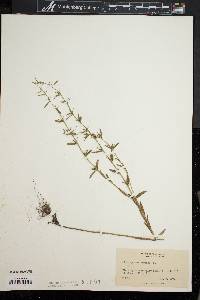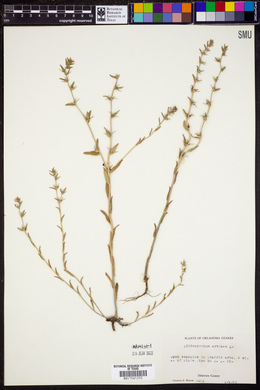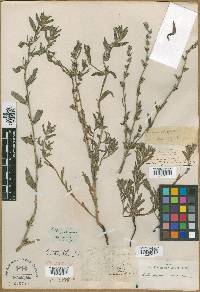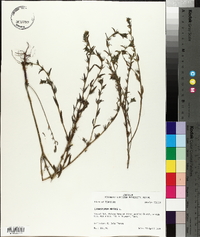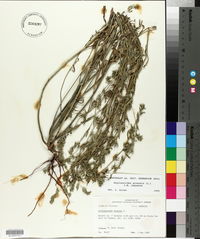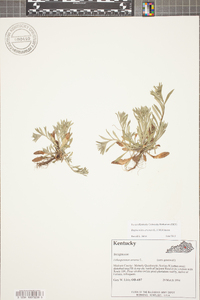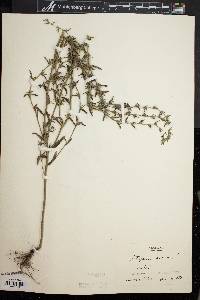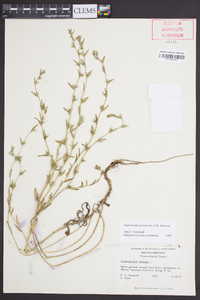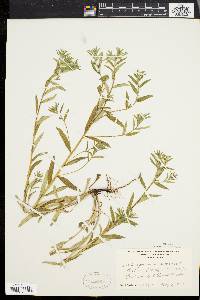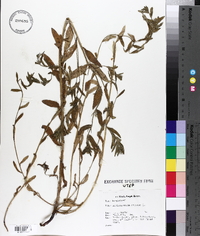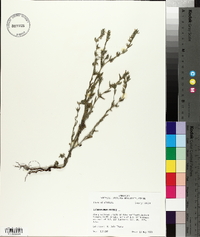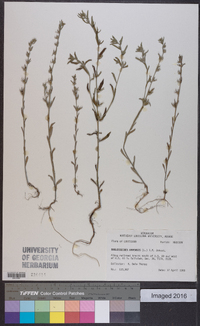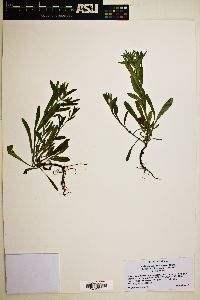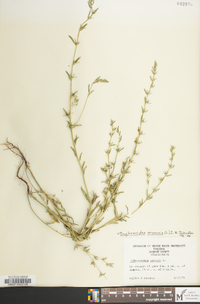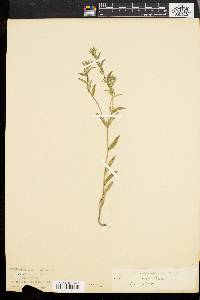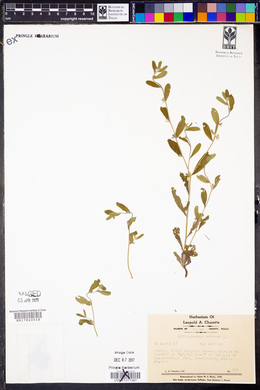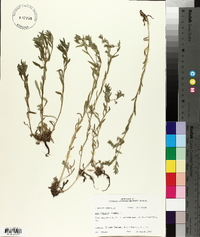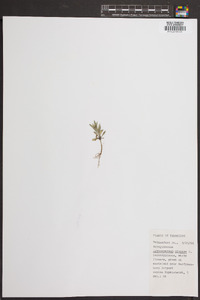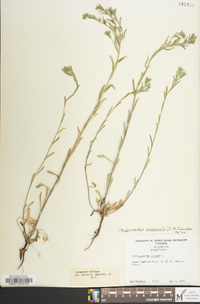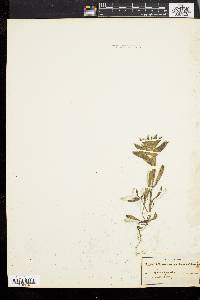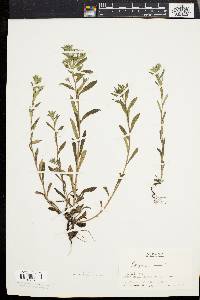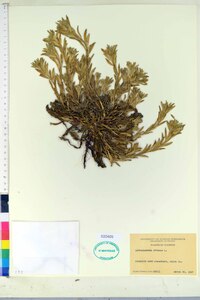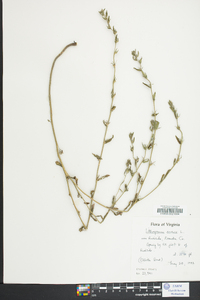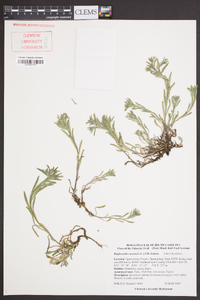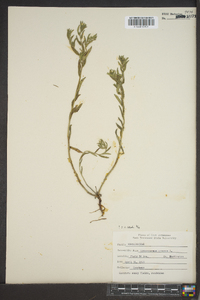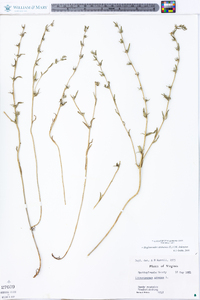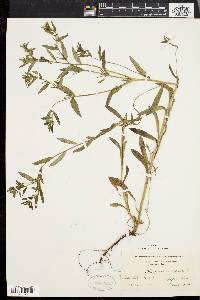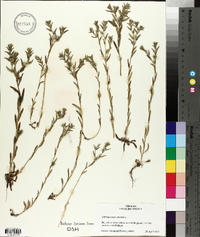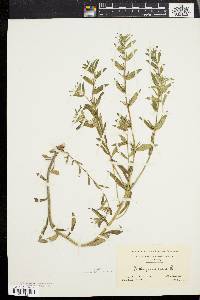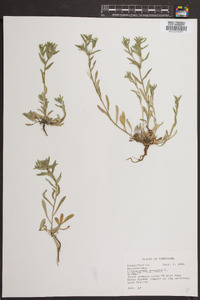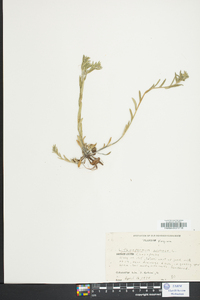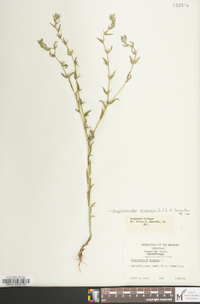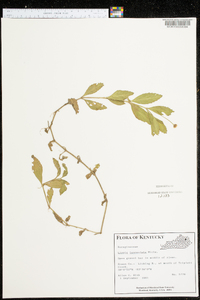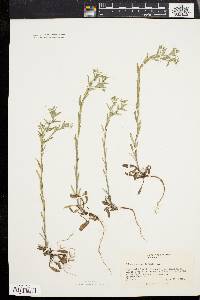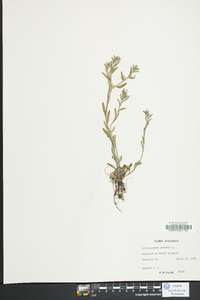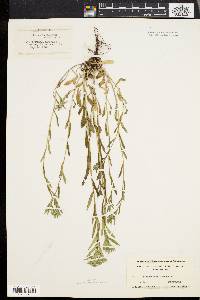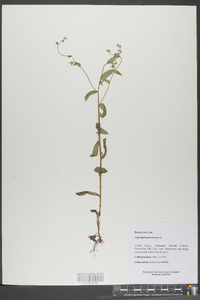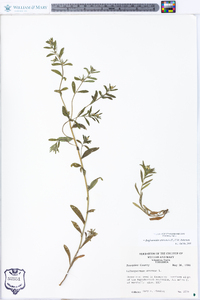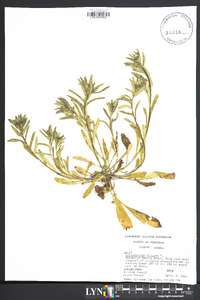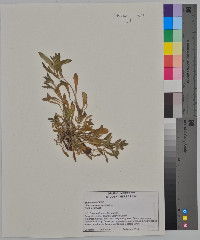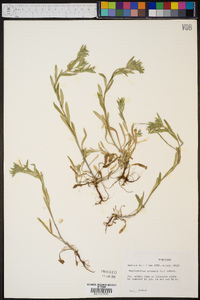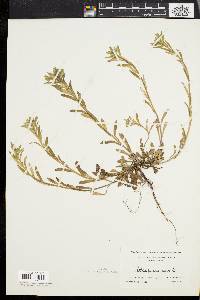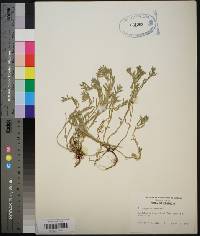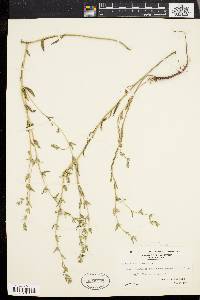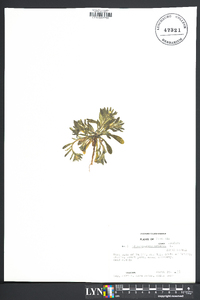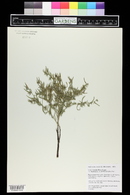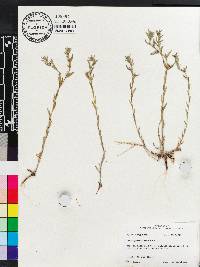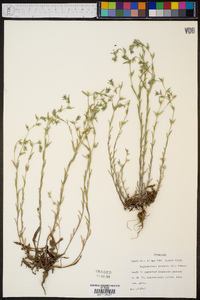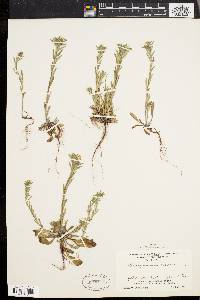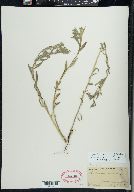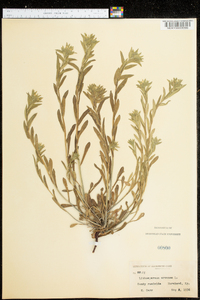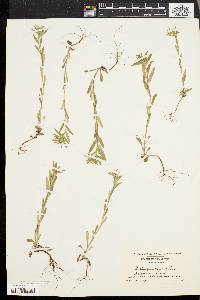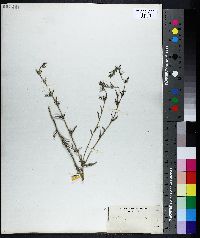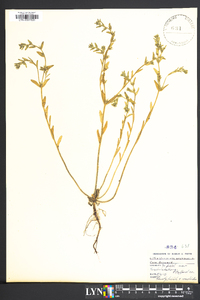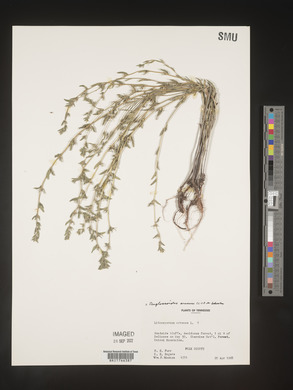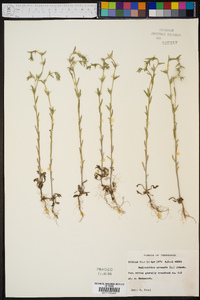
|
|
|
|
Family: Boraginaceae
Corn-Gromwell, more...corn gromwell, Gromwell
[Lithospermum arvense Thunb.] |
Annual herb 10 - 70 cm tall Leaves: alternate, somewhat erect or ascending, mostly stalkless, non-toothed, only midrib evident (no lateral veins), up to about 1 cm wide, lowest leaves oblong or elongate spoon-shaped with rounded tips, but others linear to narrow inversely lance-shaped with somewhat pointed tips. Flowers: several, solitary in crowded upper leaf axils, stalkless, white or bluish white, small (5 - 8 mm tall, 2 - 5 mm wide), radially symmetric, funnel-shaped with narrow tube and short spreading lobes. Sepals: five, bristly, up to 7 mm long (nearly as long as petal tube), but often of unequal lengths, much longer than wide, linear with pointed tips. Petals: five, but fused for over half their length into a narrow tube, then separating into five, spreading, relatively short, somewhat oval lobes. The outer surface of the petal lobes are hairless for most of their length. Stamens: five, attached to inside and below middle of petal tube, and the oblong anthers not extending past the petal tube. Pistil: with one, deeply four-lobed, superior ovary; one, slender style; and one, distinctly two-lobed stigma. The style of each flower may be of two different lengths (heterostyly), short or long, but neither type extends past the petal tube. Fruit: a cluster of one to four, erect, drab brownish gray, hard, bony, wrinkled, pitted, 2.5 - 4 mm tall, 1.5 - 2.5 mm wide, somewhat egg-shaped nutlets with pointed tips, and a shallowly rounded to almost flattened base with a collar-like rim at the very center. The nutlet clusters are enclosed by the erect, but narrow sepals. Stems: single or many, usually erect, often branched at base, slender, and covered with appressed, bristly hairs. Similar species: Lithospermum arvense is most similar to L. officinale and L. latifolium, but both of those species have obvious and visible lateral veins on their leaves, the outer surface of the petal lobes are hairy for their entire length, and the nutlets are smooth, shiny and white. The other species of Lithospermum in the Chicago Region have showy yellow flowers arranged in terminal inflorescences, and the sepals are much shorter than the petals. Flowering: April to July Habitat and ecology: Introduced from Eurasia, occasionally found as a weed in cultivated and disturbed ground, especially in sandy soils. Occurence in the Chicago region: non-native Notes: This species is sometimes placed in a separate genus as Buglossoides arvensis. The separation is based on the fact it is an annual, the stamens are attached below the middle of the petal tube, and the nutlets are pitted and wrinkled. Author: The Field Museum Strigose annual 1-8 dm, often branched at the base; lvs mostly linear to narrowly oblanceolate, 3-8(-15) mm wide, acute or obtuse, 1-nerved; fls solitary in the crowded upper axils, becoming remote, whitish or bluish-white, 5-8 mm, 2-4 mm wide; cal-lobes nearly as long as the cor; nutlets ovoid, pale dull brown, 3 mm, deeply wrinkled and pitted; 2n=28. Native of Eurasia, intr. as a weed of waste places over most of the U.S. Apr.-July. (Buglossoides a.) Gleason, Henry A. & Cronquist, Arthur J. 1991. Manual of vascular plants of northeastern United States and adjacent Canada. lxxv + 910 pp. ©The New York Botanical Garden. All rights reserved. Used by permission. From Flora of Indiana (1940) by Charles C. Deam Frequent to common in all parts of the state, mostly in sandy soil along roadsides and railroads and in waste places, fallow, and cultivated fields. ...... Indiana Coefficient of Conservatism: C = null, non-native Wetland Indicator Status: n/a |
|
|
|

